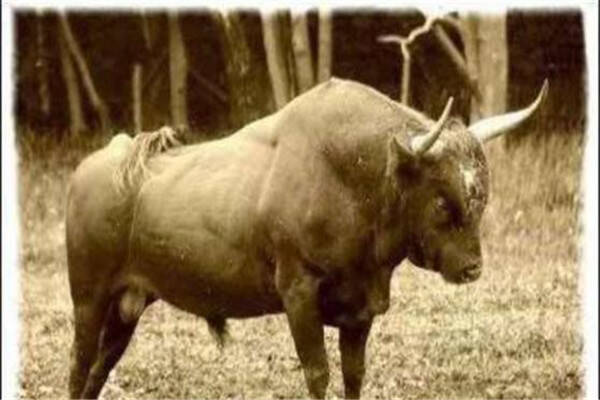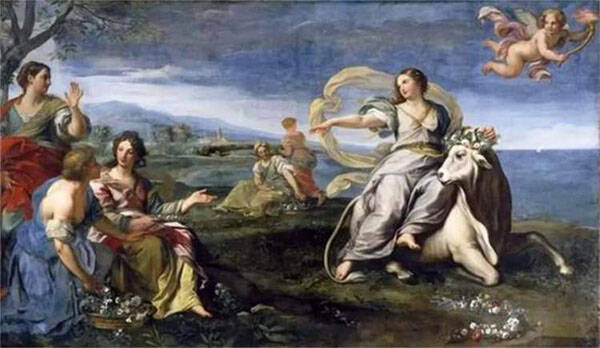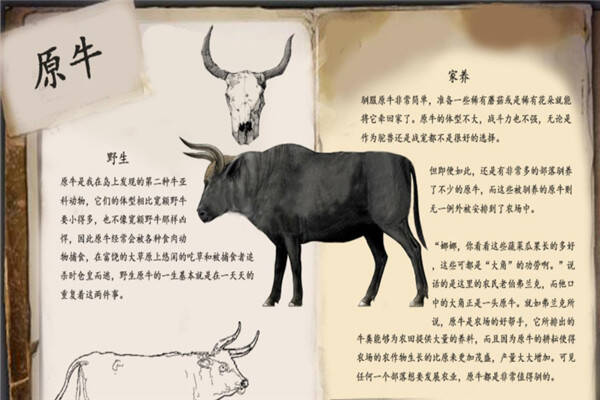Bosprimigenius
IUCN
LCBasic Information
Scientific classification
- name:Bosprimigenius
- Scientific Name:Bosprimigenius
- Outline:Ungulata
- Family:Artiodactyla Bovidae Bos
Vital signs
- length:2.8-3m
- Weight:About 1000kg
- lifetime:No verification information
Feature
The ancestor of domestic cattle, now extinct
Distribution and Habitat
Aurochs once roamed across Eurasia.
Appearance
The aurochs are much larger than ordinary domestic cattle. A large domestic cow is only 1.5 meters tall at the shoulder, but the aurochs can reach 1.75 to 2 meters and weigh up to 1 ton.
The aurochs also have many characteristics that have disappeared in domestic cattle, such as horns facing forward. The males have black fur with a white line on their backs, while the females and calves are reddish brown. They are ferocious.
Details
Bosprimigenius, scientific name, is a large cattle, now extinct. Its scientific name comes from the German word Auerochse, meaning primitive cattle. Extinct (1627).

Aurochs is a legendary wild cattle. Although it is distributed in Europe, it is a completely different species from the European bison, and its extinction is not caused by the Industrial Revolution. Before records, the distribution of Aurochs extended from China in the east to France in the west. In the last two thousand years, it was limited to central Europe.
As the prototype of many mythological cows, the aurochs frequently appear in history books. Greek mythology records that Europa, the daughter of the Phoenician king, was transformed into a white bull by Zeus, and was kidnapped to Crete, and later married to the king of Crete. The white bull here is the aurochs. In the past, humans have been hunting aurochs for a long time. Young people in Europe used to hunt aurochs as a way to strengthen their bodies, have fun in the hunt, and take pride in owning many aurochs. They are keen on inlaying silver edges on the horns of aurochs and using them as cooking utensils for banquets.

The name of the Aurochs is Latin, meaning the ancestor of domestic cattle. Domestic cattle are derived from Aurochs just as dogs are derived from wolves. Most domestic cattle are derived from Aurochs, and the most typical feature is seen in Spanish bullfighting, which has a lot of ancient style of Aurochs, and there is a light-colored line on the midline of the spine. Aurochs is burly, with a shoulder height of 1.8 meters and pointed horns. The ancient Roman ruler Caesar once described them in his book "Black Forest": They are slightly smaller than Elephants-Are-Endangered.html">elephants, with unique colors, huge bodies, and super speed. They are not inferior to humans or animals, and cannot be domesticated, even young cattle.

Since ancient times, people have been setting traps and killing aurochs for a long time. Young people who are competitive and aggressive use hunting cattle as a way to strengthen their bodies, have fun in the chase, and are proud of having more horns. People were keen on collecting horns and inlaying them with silver edges to use as banquet utensils. Indiscriminate hunting meant that aurochs only survived until the 10th and 11th centuries on the European continent. At that time, aurochs could not be found anywhere except in the wilderness of East Prussia, Lithuania and Poland. In 1299, Duke Boleslaus issued a ban on killing in his territory of Masovia. In 1359, Duke Zhemwit also protected aurochs, making Poland the last refuge for aurochs. By 1550, they were still found in the forests of western Poland. In 1590, there were only 20 left. In 1620, the last aurochs was left, and this aurochs lived until 1627. So far, we can only imagine the appearance of aurochs through bovine animals such as Javan wild cattle and domestic cattle.
Protect wild animals and stop eating game.
Maintaining ecological balance is everyone's responsibility!








